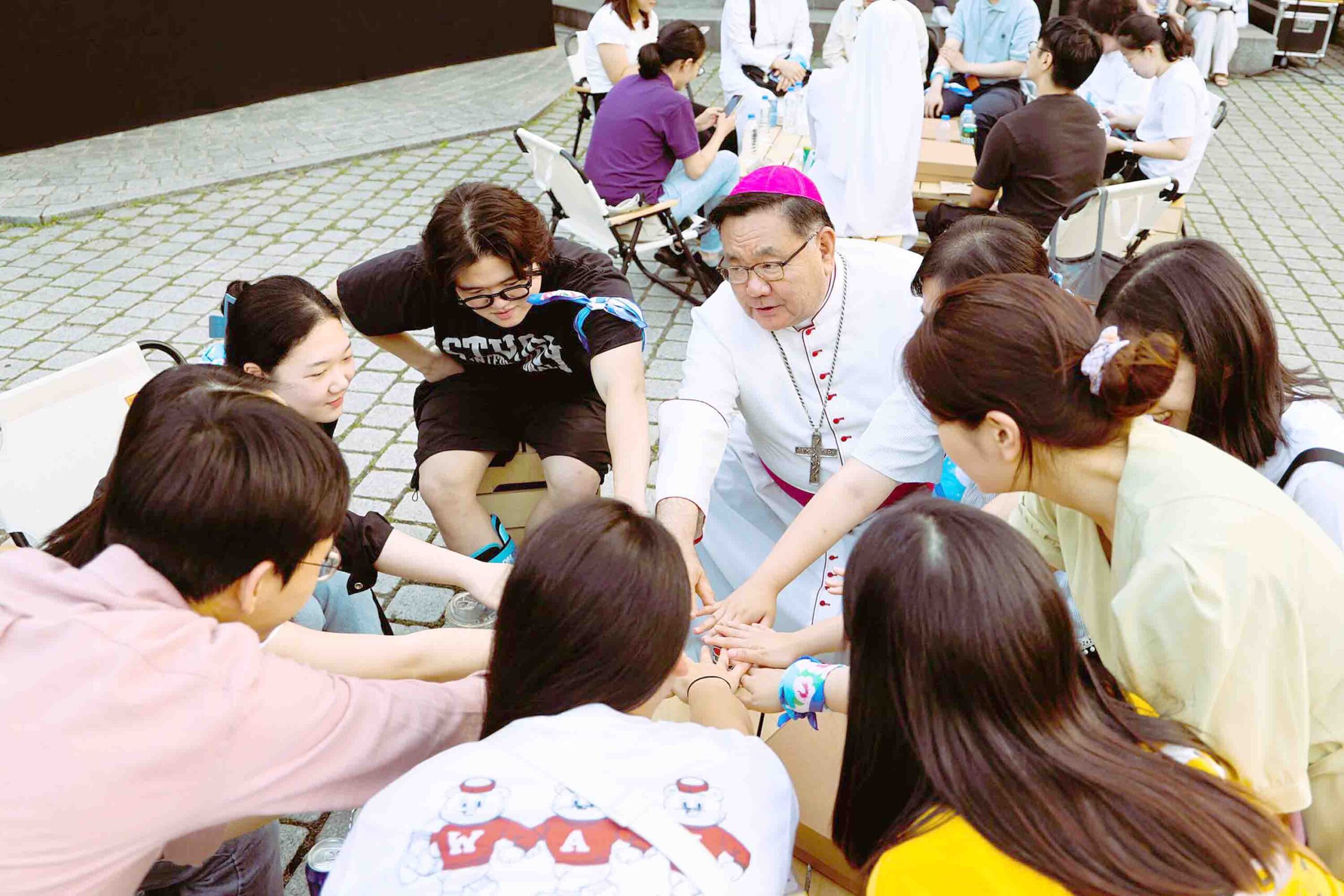

Seoul Archdiocese Engages With The Youth
The Archdiocese of Seoul has transformed the backyard of Myeongdong Cathedral into a campsite to engage with younger members of the Church.
Browse past isues
Help the mission
Support the mission
Get in touch


The Archdiocese of Seoul has transformed the backyard of Myeongdong Cathedral into a campsite to engage with younger members of the Church.


A former Korean ambassador to the Holy See spoke of the effects of Pope Francis’ recent visit to South Korea, saying that all of Asia now feels a long-term challenge to imitate his humble ways. “All the media in Korea are already speaking of ‘Francis syndrome,’” former Ambassador Thomas Han said. “The Korean people, having been deeply impressed by Pope Francis’ person and his lifestyle, seriously reflect upon the meaning of their lives and seek to see the things in life that really matter.”
Since September 2009, the umbrella group of Catholic environmental organizations has collected discarded cell phones through over 1,500 parishes nationwide. According to the organization, 100 old mobile phones contain about 3.75 grams of gold electronic parts. Under their one-year campaign, all 6.5 tons or 60-70 thousand units of phones were collected. The organization then learned that coltan, a rare metal also found in mobile phones, is mostly mined in the Democratic Republic of the Congo, a country witnessing a war between the government and the rebels over the acquisition of coltan mines. They decided to donate the first fund to the Democratic Republic of the Congo and neighboring Congo. Peter Kwon Chang-sik, coordinator of the organization, said 80% of coltan deposits are in the Congo area. Increasing coltan mining are destroying tropical forest areas and also the world’s last natural habitat for gorillas. To aggravate the situation, over 3 million people are displaced because of the war. In the Democratic Republic of the Congo, there are six Korean nuns from the Sisters of Christian Doctrine Congregation helping local children by using the donated funds. Kwon added that although mobile phones contain harmful metals such as lead, arsenic and cadmium, which destroy nature if buried or burned, they also have other valuable metals like silver and copper. For that, an old cell phone could be worth between 1,300-1,600 won (around US$1-1.5), he said.
According to Bishop Kang, “the damage which could result from this rash development, born of greed, will be a burden to ourselves and future generations, who will have to live with the consequences.” And he added: “We should avoid actions that could destroy the creative work of God which took tens of thousands of years to achieve.” The Four Rivers Project is being relentlessly pursued by the Korean government without any real discussion about the massive damage which will inflict on an environment that is already under severe threat. Before South Korea was industrialized in the years following the Korean War, its rivers cascaded down mountains, through gullies into fast running rivers before flowing through the wetlands, coastal plains and into the oceans. This natural relationship between mountains, rivers and wetlands no longer exists. By the later part of the 20th century, almost every river in the country has been dammed and forced into concrete channels. Even though it is a small country, there are already over 18,000 dams in Korea. China holds the world record in terms of the numbers of dams at 87,000, but China is roughly 100 times larger than Korea. The Korean government responded to the recent recession by investing at least $18 billion in new construction projects designed to re-engineer four important rivers – the Han, Nakdong, Keumand and Youngsan. The scale of the plan is truly massive. It involves constructing 16 new dams, rebuilding 87 existing dams, reinforcing 209 miles of river banks, dredging 570 million cubic meters of sediment from the rivers. The government’s rationale for the project is that it will prevent water shortages, bolster flood control and create ‘eco-friendly’ space for tourism. Little thought has been given to the ecological consequences of this enormous engineering venture. The project is the brainchild of the current president of Korea, Myung-bak Lee. Before he entered politics, he was the chief executive officer of Hyundai Construction Corporation. Many critics claim that Hyundai will benefit substantially from this investment. The president argues that construction will create an estimated 960,000 jobs, but since the vast majority of these jobs are in construction, they are only temporary. One way in which Catholics are expressing their opposition to the project is by celebrating Mass on the banks of the threatened rivers, but they are not the only ones opposed to the Four Rivers Project. The Abbot of the renowned Palgong-san Seonbonsa Gathawi Temple said that many Buddhist monks were also opposed to the project and that 10,000 of them had met at a prayer service. Even government employees, such as Nam Kwang-Hee, the Director-General of the Deagu Regional Environment Office, admit their surprise that the work is being carried out at such a frenetic pace, involving three, eight-hour shifts. His rationale is that they need to complete the bulk of the work before the rains arrive in June. Others are more skeptical and believe that the president wants to push through with the project as quickly as possible before
